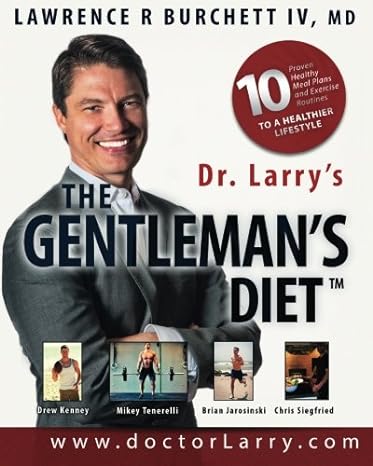Two Surprising New Studies — And What They Mean for Your Health

[cs_content][cs_section bg_color=”hsl(0, 0%, 100%)” parallax=”false” separator_top_type=”none” separator_top_height=”50px” separator_top_angle_point=”50″ separator_bottom_type=”none” separator_bottom_height=”50px” separator_bottom_angle_point=”50″ style=”margin: 0px;padding: 45px 0px;”][cs_row inner_container=”true” marginless_columns=”false” style=”margin: 0px auto;padding: 0px;”][cs_column fade=”false” fade_animation=”in” fade_animation_offset=”45px” fade_duration=”750″ type=”2/3″ style=”padding: 0px;”][x_custom_headline level=”h1″ looks_like=”h1″ accent=”false”]Two Surprising New Studies — And What They Mean for Your Health[/x_custom_headline][cs_text]Reviewed & Approved by Dr. Larry
[dropcap]R[/dropcap]ecently, Dr. Larry sat down to discuss two recent health studies that yielded surprising results. Is it possible that mammogram abnormalities are being overtreated? How much exercise does it really take to improve your long-term health? Most importantly, what could these new studies mean for you? Dr. Larry gives his take here.[/cs_text][x_video_player type=”16:9″ src=”https://youtu.be/t3Ujpy4vHB0″ hide_controls=”false” autoplay=”false” no_container=”false” preload=”none” advanced_controls=”false” muted=”false” loop=”false” poster=””][cs_text]
Abnormalities in Mammograms May Be Overtreated
One study showed that one-third of women who had abnormal results in their mammograms never had any health problems as a result of those abnormalities in their breast tissue. In other words, that white spot that shows up in your mammogram may be benign and won’t require any treatment other than monitoring in your future mammograms.
“We do over-diagnose and over-treat sometimes,” Dr. Larry says. While a ‘better safe than sorry’ approach may be the best course of action for many women, it may not be necessary for others. It all depends on your individual health circumstances, Dr. Larry cautions.
Your need for mammogram screening and the aggressiveness with which you should consider treating abnormal mammogram results will depend on your personal risks, such as your family history, your age, past health problems including cancer, and more. Your doctor will be able to address these needs with you.
“A good, trusted doctor can help you sort that out to figure out what’s right for you,” according to Dr. Larry. “Individualize it based on your risk.”
The American Cancer Society recommends that women 55 and older get a mammogram every two years. Talk to your doctor about your individual risks and whether you should increase or decrease that recommended frequency for breast cancer screenings based on those risks.
Exercising a Little Bit (Even if Only Once a Week) Is Significantly Healthier than Nothing
While it’s easy to think that there’s no point in working out for only a few minutes once or twice a week, this study shows that there may be significant long-term health benefits to exercising even a little.
“Fifteen minutes, three times a day, compared to doing nothing, and you’ll live three years longer,” Dr. Larry says of the new study. “14 percent reduction in all caused death — heart disease, cancer, all that stuff. That’s meaningful.”
While regular exercise is obviously going to be much more beneficial to your short-term and long-term health, the study shows that even exercising one day a week could improve your health. And the addition of these micro-workouts may lead to more consistent exercise, Dr. Larry hopes. “Maybe it can lead to something more.”
But for people who believe that it’s not worth it to only exercise on the weekends, this newest study shows that even small efforts to improving your health can pay off with added years to your life. As Dr. Larry puts it: “Something is better than nothing.”[/cs_text][x_gap size=”50px”][/cs_column][cs_column fade=”false” fade_animation=”in” fade_animation_offset=”45px” fade_duration=”750″ type=”1/3″ style=”padding: 0px;”][x_widget_area sidebar=”sidebar-main” ][x_widget_area sidebar=”ups-sidebar-adoption-services” class=”man”][/cs_column][/cs_row][cs_row inner_container=”true” marginless_columns=”false” style=”margin: 0px auto;padding: 0px 0px 30px;border-style: solid;border-width: 1px;”][cs_column fade=”false” fade_animation=”in” fade_animation_offset=”45px” fade_duration=”750″ type=”1/1″ style=”padding: 0px;”][cs_text]
Featured Content
[/cs_text][/cs_column][/cs_row][/cs_section][cs_section parallax=”false” separator_top_type=”none” separator_top_height=”50px” separator_top_angle_point=”50″ separator_bottom_type=”none” separator_bottom_height=”50px” separator_bottom_angle_point=”50″ style=”margin: 0px;padding: 20px 0px 0px;”][cs_row inner_container=”true” marginless_columns=”false” style=”margin: 0px auto;padding: 0px;”][cs_column fade=”false” fade_animation=”in” fade_animation_offset=”45px” fade_duration=”750″ type=”1/1″ style=”padding: 0px;”][ess_grid alias=”featured_content”][/cs_column][/cs_row][/cs_section][/cs_content]


